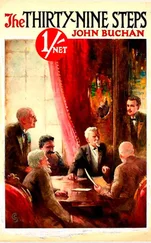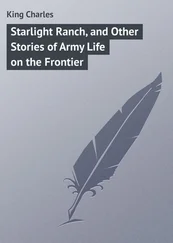Charles Gordon - Recollections of Thirty-nine Years in the Army
Здесь есть возможность читать онлайн «Charles Gordon - Recollections of Thirty-nine Years in the Army» — ознакомительный отрывок электронной книги совершенно бесплатно, а после прочтения отрывка купить полную версию. В некоторых случаях можно слушать аудио, скачать через торрент в формате fb2 и присутствует краткое содержание. Жанр: foreign_antique, foreign_prose, на английском языке. Описание произведения, (предисловие) а так же отзывы посетителей доступны на портале библиотеки ЛибКат.
- Название:Recollections of Thirty-nine Years in the Army
- Автор:
- Жанр:
- Год:неизвестен
- ISBN:нет данных
- Рейтинг книги:5 / 5. Голосов: 1
-
Избранное:Добавить в избранное
- Отзывы:
-
Ваша оценка:
- 100
- 1
- 2
- 3
- 4
- 5
Recollections of Thirty-nine Years in the Army: краткое содержание, описание и аннотация
Предлагаем к чтению аннотацию, описание, краткое содержание или предисловие (зависит от того, что написал сам автор книги «Recollections of Thirty-nine Years in the Army»). Если вы не нашли необходимую информацию о книге — напишите в комментариях, мы постараемся отыскать её.
Recollections of Thirty-nine Years in the Army — читать онлайн ознакомительный отрывок
Ниже представлен текст книги, разбитый по страницам. Система сохранения места последней прочитанной страницы, позволяет с удобством читать онлайн бесплатно книгу «Recollections of Thirty-nine Years in the Army», без необходимости каждый раз заново искать на чём Вы остановились. Поставьте закладку, и сможете в любой момент перейти на страницу, на которой закончили чтение.
Интервал:
Закладка:
Boats of the kinds already described now lay ready moored to the bank of the Jumna for our reception. The General gave as a last entertainment a sumptuous déjeûner , to which were invited the principal officers, civil and military, of the station. Healths proposed and drunk to in champagne; good wishes expressed; leave-takings gone through; then all take their respective places; bands play “Auld lang syne,” “The girls we left behind us,” “Home, sweet home,” etc.; we are speedily on board; the moorings untied; the “fleet” in movement with the placid stream; from the ramparts of the fort heavy guns fire a “Royal salute” in honour of our regiment. Thus begins the journey homewards. 51 51 October 16, 1844.
We are speedily at the fort of Chunar, built by the Mahomedan conquerors of India, from Hindoo temples destroyed for that purpose; captured by Major – afterwards Sir Hector Monro in 1764, 52 52 Or rather, fell into his hands as a result of his victory at Buxar.
but still held semi-sacred by the descendants of those whose shrines were so desecrated. On an open tract of ground in its near vicinity, a series of barracks and small houses were occupied by pensioners of the East India Company.
Benares, viewed from the Ganges, is picturesque, and in some respects beautiful. Houses of red sandstone, their fanciful windows, projecting balconies, and flat roofs, giving to them a character all their own. The city extends from the very edge of the river; its numerous temples and ghats – the latter crowded with devotees and others, wearing garments of many colours, giving the scene a picturesque aspect. Some of the temples and ghats present a dilapidated appearance; but others, especially that of Visheswar – dedicated to Siva – is resplendent with gold gilding. Another striking object is the Mosque of Arungzebe, erected in the reign of that monarch from Hindoo temples destroyed for that purpose. Near the golden temple, in the heart of the city, is the no less famous well, named after Manic Karnik, believed by votaries to be filled with “the sudor of Vishnu,” and at its bottom to contain Truth. At a short distance is the Astronomical Observatory, erected by Jai Singh, A.D. 1693.
History records that this ancient city continued during many generations to be the metropolis of Aryan civilization in India. It was at Sarnath, a suburb of Kasi, as Benares was then called, that in the sixth century B.C. Gautama preached the doctrines of Karma 53 53 That each act in this life bears its fruit in the next.
and Nirvana. 54 54 The attainment of a sinless state of existence.
There Buddhism assumed its sway, which it retained till the fourth century A.D., when it gave way before a revival of Hindooism, in regard to which religion Benares has ever since been considered its most sacred city.
Here we first witnessed the celebration of the Ramdeela festival. It consists in a representation of the more important incidents connected with the abduction of Sita; the chase, the siege, and capture of Ravanu’s stronghold; her rescue, the ordeal of fire, to test her purity, and reception by Rama. As noted at the time, the performances, interpreted by the light of legend, gave to them considerable interest.
Resuming our river journey, we met a fleet of boats similar to our own, having on board a party of the 29th Regiment, in progress towards the north-west. The effective portion of the regiment was marching to its destination from Ghazepore, at which place it had been stationed during the two years it had been in India. From a strength of close upon 1,200, it had been in that short time reduced, by fever and cholera, to little over 400 effectives. Alas! out of those remaining, great were to be the losses at Ferozeshah, and other frontier battles, then in the near future.
There was nothing in the aspect of Ghazepore, or the buildings connected with it, to account for the havoc in life and health sustained by the 29th Regiment. A large extent of grass-covered plain separates the station proper from the river. On it stands a monument, erected in memory of Lord Cornwallis, 55 55 Died 1805.
who died near this place, while in progress up the Ganges. That monument, surrounded by tamarisk bushes, above which its summit rises, bears upon it a memorial figure by Flaxman. The range of barracks and the church are the only other buildings that are immediately seen. A visit to the native town brought us to the ruins of what had been the palace of Mir Cossim Ali Khan, whose forces were defeated, and power destroyed, at Buxar, in 1764, by Major Munro. The graceful proportion of its pillars, arches, and general aspect struck us forcibly, though the building itself is in a state of decay, as are also the numerous smaller ranges by which, in former days, it was surrounded; nor is it more than eighty years since that decay began. Other points of interest connected with Ghazepore include the growth and manufacture of poppy and opium, roses and their otto. A breeding stud for cavalry and artillery horses is here maintained by Government.
Buxar, our next halting place, was one of three places at which breeding studs were maintained by “the Company,” the other two being Ghazepore, already mentioned, and Haupur. It would appear, however, that all these are insufficient to meet the requirements of the army, and that consequently importation of horses from the Cape and Australia has had to be resorted to.
Dinapore, then occupied by European 56 56 During the early wars by the East India Company the troops employed by it comprised men of various European nationalities, besides natives of the United Kingdom.
artillery, one British and three native regiments of infantry, for the assigned purpose of guarding against possible incursion by the Nepaulese, whose relations towards the Government of India were somewhat strained. It was said that for a number of years the terms of the Treaty of 1816 between Sir David Ochterlony and the chief of the Ghoorkas were faithfully adhered to by the latter; but that in recent times signs of disaffection had begun to show themselves. As an outcome of the Treaty in question, some of the Nepaulese took military service under the Company, they being enrolled in what became known as Ghoorka regiments. For some reason, the nature of which did not transpire, several days elapsed before our journey was resumed.
Impressions of the place were not particularly favourable; that it has attractions of a kind, however, seems evident, as families and various retired officers were said to make it their residence. A few miles distant is the city of Patna – Pataliputra of the Hindoos, and Palibothra of the Greeks – famous in relation to British history as the scene of murder by Kossim Khan, in 1763, of 200 Englishmen, besides 2,000 sepoys; to become again noted in connection with events of 1857. On our way to and from that city we noticed by the roadside the now disused grain store, erected in 1769–70, to receive grain against the great famine then prevailing in Behar, in respect to which it is related that “the tanks were dried up, the springs ceased to reach the surface, and within the first nine months of 1770 one-third of the population of Lower Bengal were carried off by want of food.”
The 62nd, occupying barracks at Dinapore, entertained the officers of the Buffs on a scale of hospitality and in a manner to be compared only with regimental festivities pictured in the works of Charles Lever. “The Springers,” as in those days they loved to be called, were under orders for Umballah, much delighted at prospects of service therein implied; for the state of affairs in the Punjab, already mentioned, had from day to day continued to increase in gravity. The feeling of gallant hilarity was expressed in a somewhat demonstrative manner in extemporary song by one of their officers in early morning hours, while mess had not yet broken up. 57 57 The officer alluded to, familiarly known as “Paddy” Graves, parodied a well-known soldiers’ song of Peninsular days after this manner: — The Sixty-second Springers all – are Going to march unto Umballah – r; And the Buffs, that gallant band – are Going to their native land – are. Love, farewell.”
Of our festive hosts on that occasion scarcely one was alive fourteen months thereafter.
Интервал:
Закладка:
Похожие книги на «Recollections of Thirty-nine Years in the Army»
Представляем Вашему вниманию похожие книги на «Recollections of Thirty-nine Years in the Army» списком для выбора. Мы отобрали схожую по названию и смыслу литературу в надежде предоставить читателям больше вариантов отыскать новые, интересные, ещё непрочитанные произведения.
Обсуждение, отзывы о книге «Recollections of Thirty-nine Years in the Army» и просто собственные мнения читателей. Оставьте ваши комментарии, напишите, что Вы думаете о произведении, его смысле или главных героях. Укажите что конкретно понравилось, а что нет, и почему Вы так считаете.












